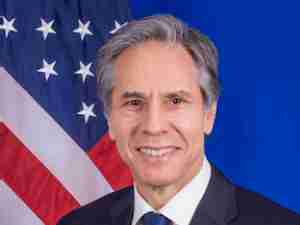Wilkins Downplays Canada Export Gains as Oil Damage Lingers
By: Greg Quinn | Oct 06 2016 at 01:15 PM | International Trade
Bank of Canada Senior Deputy Governor Carolyn Wilkins said Canada’s economy is still adjusting to a slump in oil-sector investment, and the prospect for exports is uncertain even with two months of gains.
Risks to inflation are “tilted somewhat to the downside,” and there’s “material slack” in Canada’s economy, Wilkins said Thursday in the pulp-and-paper hub of Trois-Rivières, Quebec, the final speech from a policy maker before the bank’s Oct. 19 rate decision.
The central bank has backed away from predictions as recently as July that non-energy exports would dominate an economic recovery. Wilkins’ remarks underscore Governor Stephen Poloz’s assessment from last week that Canada’s economy may need three to five years to recover from crude oil’s plunge, which began in mid-2014.
“The Bank of Canada is maintaining a more cautious view of Canadian export performance, and by extension, the overall economic adjustment process,” Brian DePratto, an economist at TD Securities in Toronto, wrote in a note. “Today’s speech seems to be one that could be pointed to down the road as an ‘I told you so’ should the bank hold or decide to cut rates.”
‘Faded’ Effect
The export weakness can be partly explained by sluggish U.S. investment, stiff competition from nations such as Mexico and a fading boost from a lower Canadian dollar, Wilkins said. “We can expect the weaker dollar to support the level of exports, even though its influence on their growth rate has faded for the most part,” she said. In response to an audience question, she added: “For the majority of business there are other things than the dollar” that influence competitiveness, such as labor costs and productivity.
Policy makers are studying exports to figure out “what is temporary and what is permanent,” Wilkins said. Business investment has also lagged with global growth clouded by Brexit and continued cutbacks in the oil industry.
Wilkins downplayed a report Wednesday showing recent growth in exports, saying “there was an uptick in July and August, which is encouraging, but uncertainty lingers.”
“Canada is going through important and complex adjustments,” Wilkins said. “There has been progress, but also a few setbacks.”
The economy should get a boost from rising exports of services, and from the C$25 billion ($19 billion) of federal fiscal stimulus coming over the next two years, she said.
Mortgage Rules
The measures Finance Minister Bill Morneau announced this week to curb a housing boom “will help mitigate risks to the financial system,” Wilkins said.
“We are mindful that low interest rates can lead to a buildup in financial vulnerabilities,” she said. “As part of our financial stability mandate, we are monitoring very closely the high level of household indebtedness and housing sector activity.”
Wilkins said there is evidence that over time the economy will return to normal. “It will take time before the economy has fully adjusted to the oil price shock, the U.S. economy strengthens and the effects of fiscal stimulus take hold,” she said.
Investor bets on an interest-rate cut by the end of next year declined on Thursday. Swaps trading suggests a 21 percent chance of a reduction, down from 23 percent on Wednesday and 33 percent at the end of last week.








